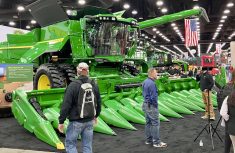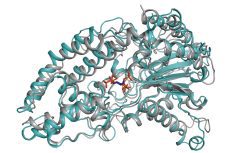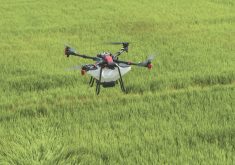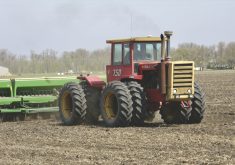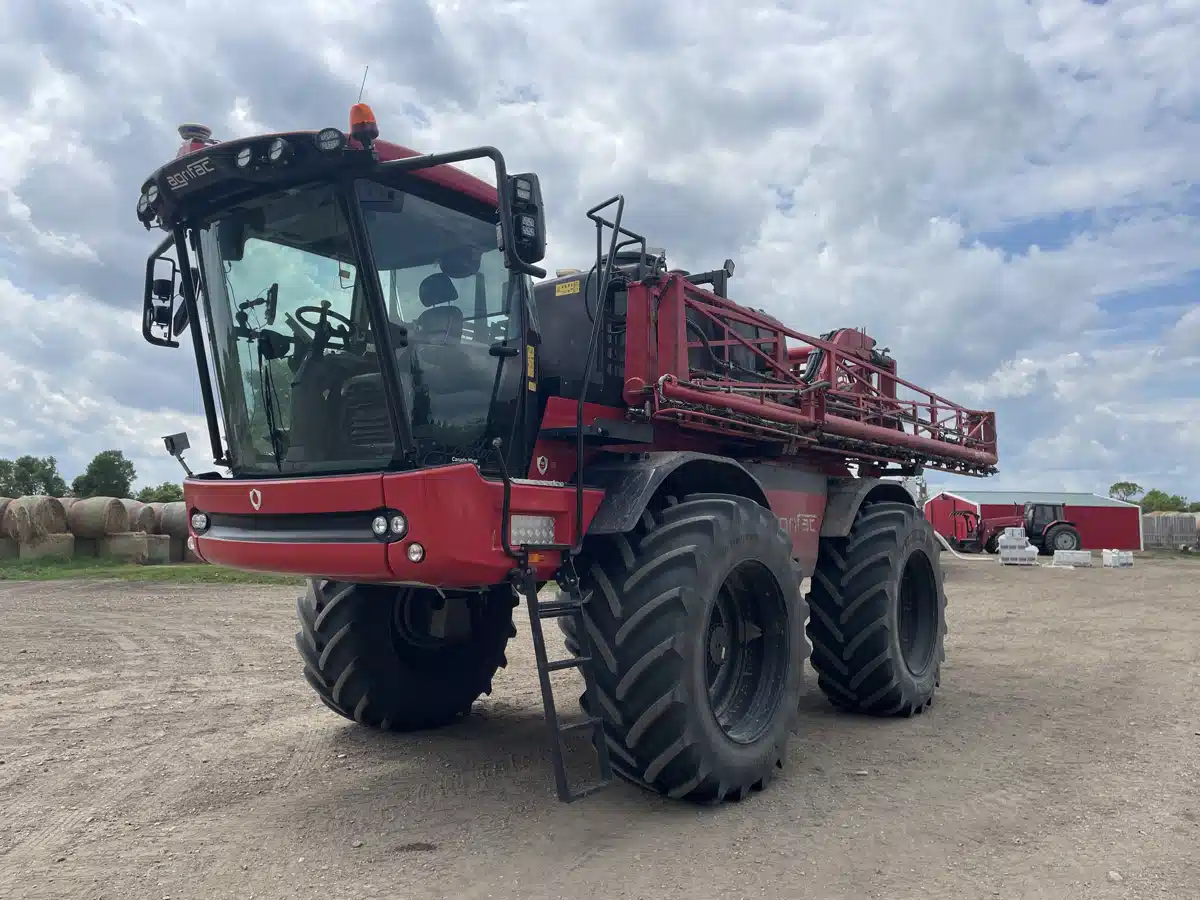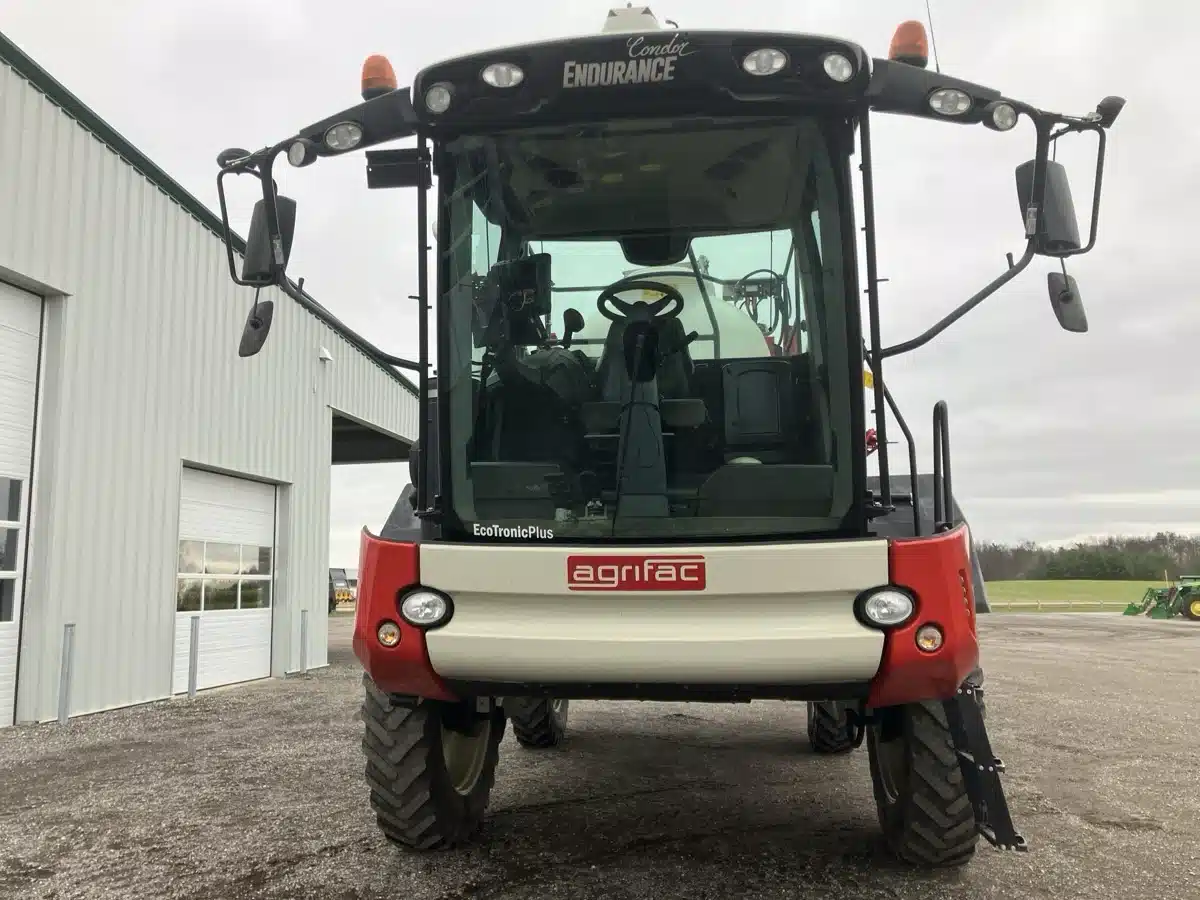Early adopters are buying optical spraying systems to greatly reduce the amount of herbicide required for pre-season burnoff of weeds. This alone is often enough to justify the cost for larger farms that cover thousands of acres per year. But pre-seed burnoff — seeing green weeds on brown ground and spraying them — is just the gateway application, and Stephen Vajdik is pushing to expand the technology’s repertoire.
Vajdik works with his brother-in-law Adam Gurr running Agritruth Research and the family farm at Rapid City, Manitoba. In addition to pre-seed burnoff, they are testing green-on-brown settings to apply fungicide where needed on flowering canola and pre-harvest desiccant where needed on edible beans. Their sprayer also has green-on-green settings to target green weeds in a green crop, but that is a work in progress. “We’re trying to find ways to use the optical system for the whole season,” Vajdik says.
Vajdik doesn’t have formal tech training but did some programming in high school and university, and enjoys exploring technology to make life easier. “I like pushing boundaries.”
Read Also

Are you ready for farm succession?
What motivates some farmers to make a succession plan while others don’t seem worried.
In 2022, the farm had fields with drowned out and thin areas. Vajdik wondered how he might use the optical spraying system to target fungicide to only those areas that had enough crop to justify the cost.
With the optical spraying system, cameras mounted every 10 feet along the boom take pictures constantly, and feed them to the computer that divides images into a grid and analyzes each grid for green. Grids that meet the operator threshold for greenness get sprayed. For example, with pre-seed burnoff, a sensitivity of three per cent means that anything green that fills three per cent or more of a grid will get sprayed.
This process of photo, analysis and spray happens in fractions of a second while the sprayer travels 15 mph across the field.
Vajdik figured he could use this for fungicide by setting the sensitivity to 99 per cent. Any grid filled 99 per cent or more with green would be sprayed. Any grid with less than 99 per cent green — perhaps due to smaller, thinner plants or drowned-out areas — would not get sprayed. It was a quick way to isolate thicker areas of the field most likely to provide a return on investment for the fungicide.
They tried it on one canola field in 2022. The field included an Agritruth study on fertilizer rates. “We didn’t want bad disease to skew the data,” Vajdik says. He filled the sprayer for 120 acres and ended up spraying 150, stretching the fungicide across an extra 30 acres. Vajdik says an operator could use the manual touchscreen on-off in drowned out areas, but the automatic option is easier and reduces operator fatigue.
With no drown outs in 2023, he didn’t need that flexibility. On-off fungicide is not necessary when crop is uniformly good (it all gets sprayed) or uniformly bad (nothing gets sprayed.)
With pre-harvest spray of Reglone on edible beans, however, Vajdik again tried the green-on-brown setting. Plants still green got the high rate. Dry brown plants got the low.
The sprayer
Gurr and Vajdik run an Agrifac, made in the Netherlands, mounted with a Bilberry optical system, made in France. Why Agrifac? It had the features they wanted, including a recirculating boom, individually controlled nozzles and super-stable suspension. “You need a perfectly stable boom for the cameras to work. This sprayer was good for our undulating fields,” Vajdik says.
Nozzles are on 10-inch spacing and each has pulse width modulation with a solenoid to control the rate. This feature not only keeps the rate consistent on turns and with varying ground speed, it also provides the rate control needed for optical spraying.
With a recirculating boom, plumbing loops back through the system to maintain pressure along the full length. With individual nozzle shut-off, sprayers with recirculating booms can be primed without spraying. It also aids in complete cleanout. Agrifac introduced this feature to North America; various European and North American sprayer companies followed soon after.
Tom Wolf, sprayer expert and owner of Agrimetrix, is a fan of recirculating booms, individual nozzle control and optical spraying. Says Wolf: “Stephen Vajdik and Adam Gurr have the opportunity to broadcast and spot spray at the same time with this sprayer, applying a low dose across the whole field and a high dose where it sees larger weeds.”
This can also apply to fungicide and pre-harvest applications, as Vajdik has shown.
Green on green
The Bilberry optical spraying system also offers green-on-green and the ability to pick out green weeds in a green crop. Vajdik says it can target broadleaf weeds in cereal crops and grassy weeds in broadleaf crops. Corn is one exception where it can target both broadleaf and grassy weeds in the space between rows.
Vajdik tried green-on-green in one broadleaf field, applying a blanket low rate of herbicide and hitting wild oats with the high rate. But most crops have both broadleaf and grassy weeds, and Vajdik doesn’t see economic sense in going over fields a second time to use the optical system for a targeted spray. “I don’t see much use for green-on-green until we have induction or injection to add chem into the line,” he says. With that feature, the sprayer could target the broad spectrum of weeds with the main tank and use the optical system to give specific weeds a shot of something extra.
Carl deConinck Smith has a R4045 John Deere sprayer equipped with direct injection and optical spot spray. With direct injection, he has a separate tank for the spot spray product and the system injects that second product directly into the spray booms as needed and at variable rates. However, the farmer from Fiske, Sask., still doesn’t see value in green-on-green at this time. “Green-on-green has only 70 to 85 per cent accuracy in targeting weeds within crop,” he says. “Missing 15 per cent of weeds is not good enough.”
He adds that green-on-brown is also only 85 per cent accurate, but tiny weeds missed with a green-on-brown pre-seed can be controlled by the in-crop spray.
Tom Wolf, at his website sprayers101.com, wrote about a new Greeneye sprayer with an optical spraying system as well as a second tank and second boom. The Greeneye sprayer can broadcast a residual product while spot-spraying a post-emergent product in one pass. In the U.S., where farmers are dealing with major threats from glyphosate-resistant weeds, especially Palmer amaranth and waterhemp, the ability to target these weeds with residual products in corn and soybeans makes dual tank green-on-green systems more valuable, Wolf says. “This is the American reality for soybeans and corn,” he says. “There is a slightly less stringent need for that up here at this time.”
Sprayer technology is advancing quickly, and green-on-green algorithms will get better at spotting individual species, not just grassy or broadleaf weeds. One solution, Vajdik says, would be for algorithms to identify key crops and spray every plant that isn’t crop. That will save the program having to identify hundreds of different weed species. Optical spraying systems could also create maps of specific target weeds to target with spot sprays or other integrated actions later in the year, or subsequent years.
The way sprayer cameras see will also improve. Normalized difference vegetation index (NDVI), which senses the greenness of crops, would work really well to assess the fungicide need for individual plants, deConinck Smith says, adding, “That’s where the camera system will be in the future.”
In the meantime, deConinck Smith, like Vajdik, has found ways to expand the use of green-on-brown. For example, he can use it for spraying larger perennial or winter annual weeds in just-emerged canola. With the settings high enough to skip the tiny emerged canola crops, he can apply a high rate of glyphosate to the target weeds without spraying the canola. This is particularly useful if the farm missed a pre-seed burnoff and needs to spray these large weeds with a high rate and as soon as possible.
DeConinck Smith farms over 10,000 acres, and he figures an 8,000-acre farm could pay off the $200,000 to $300,000 cost for an optical spraying system and specialized boom within two years based on the chemical saved for pre-seed burnoff alone.
“If you’re buying a new sprayer, this add-on is a no brainer,” deConinck Smith says.
Wolf says optical spraying systems have matured beyond the original hype. “With these technologies, we overestimate their value in the short term and underestimate in the long term,” Wolf says. “These models are just going to get better and better at detecting weeds. And we will get more innovative. I see a bright future for the technology with people like Stephen and Carl innovating new ways to apply it.”
– Jay Whetter is an agriculture journalist and communications manager for the Canola Council of Canada.




